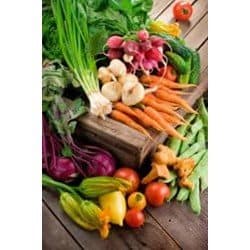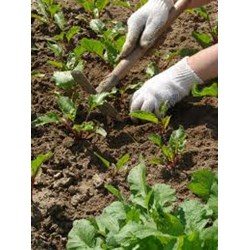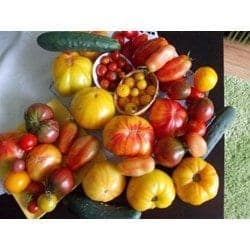Gardening and Nutrition EducationClick Here!Community Groups Created an enclosed Food-Producing Garden;
Gardens are located on vacant land, community individuals or groups volunteer participate in the development and maintenance of public gardens.
No one person is responsible for any portion of the site. One group, a community-based and resident-led volunteer groups… Gardens whereby individuals or groups volunteer to be assigned garden plots. Garden members within their respective
Gardens democratically organize themselves,
Community groups developed many residential urban farms,
The U.S. Department of Health and Human Services recommends eating more dark green vegetables, orange vegetables, legumes, and fruits; community gardens as a promising approach to promote healthy behaviors.
This is particularly important in establishing healthy behaviors among children given the rise of childhood obesity…
Gardening – Education:
However, community gardens offer ideal sites for local farmers markets, and gardeners often seek farmers to provide space-intensive crops such as corn or potatoes. They also can
Hire farmers to provide services such as plowing and providing mulch and manure. In turn, small farmers can reach a wider audience and consumer base by drawing on community gardeners and their contacts. Although the two approaches are distinct, both can be effective ways to produce local food in urban areas, safeguard
Green space, and contribute to food security. Community gardens also increase environmental aesthetics, promote neighborhood attachments and social involvement;
**** ACGA provides resources to assist anyone wishing to start a
Community garden or find a garden near their home, as well as training classes in community gardening organizing and management. They also offer a website, a newsletter, an email listserve and a magazine. ACGA’s most recent survey suggests that the total number of community gardens around the US alone is over 5000…
American inner-cities, community groups have reclaimed abandoned or
Vacant lots for garden plots. In these cases, groups have subsequently leased from a municipality that claims the property or claimed squatter’s rights; Their gardens may donate fresh fruits and vegetables to local food pantries, cooperatives, and homeless members of their community- ACGA, a non-profit coalition founded in 1979, is the primary advocacy group for community gardening in the US and
Canada. After many years of being hosted by the community garden support program Philadelphia Green in Philadelphia, Pennsylvania, ACGA is now based at the Franklin Park Conservatory in Columbus, Ohio.
Community gardening exists
Across northern North America, and is particularly strong in the Northeast, where literally thousands of community gardens grow in New York City, Philadelphia and Boston. It is also strong along the West Coast, especially in British Columbia, and in Midwestern centers such as Chicago and Minneapolis.
California
San Francisco,
California
In San Francisco, Community Gardens are available through various public and private entities. Most community gardens in San Francisco are available through its Recreation and Park Department, which manages over 35 community gardens on City property. These are allotment gardens whereby individuals or
Groups volunteer to be assigned garden plots;
Learn How To Grow Organic Food
With Less Than 8 Hours Work A Year-
This Is A Breakthrough Method,
Click Here!

Variety Is Important In Your Diet …
Growing Vegetables in Garden Enclosures
Enclosures are an effective way to grow the types of vegetables when you want to grow them.
There are a number of different types of enclosures and the conditions that
you need to create for your vegetables coupled with the outside conditions
will help to determine what sort of enclosure is required. In some instances
the enclosure may be little more than a durable plastic.
In other cases it may be solidly constructed building. In any structure there are some
points to be aware of when growing vegetables in garden enclosures and some tips
for getting more out of it.
The first consideration is to know your vegetables.
This is something that you should do prior to even choosing which vegetables
to put in the enclosure. Since many enclosures are a single room the conditions
throughout will be quite similar. Therefore, you will need to select vegetables
that can grow in similar conditions. There are a surprising variety and it is possible
to alter the conditions from one season to another.
This can allow for a greater diversity in the vegetables that you grow.
When learning about the vegetables learn about the prime conditions.
Since you can control much or all of the conditions while growing vegetables
in garden enclosures, you can create the optimum conditions in many cases.
This will help to maximize the health of the vegetables.
The next consideration is that the planting cycle. Especially when you have an
enclosure there is generally the intention of maintaining productivity.
Growing vegetables in garden enclosures can allow you the option of growing year round.
This alone increases the amount of vegetables that can be produced.
You may also choose to move more mature plants outside when the conditions are favorable.
These steps alone can not provide the level of productivity that is achieved
with well-scheduled planting. Some people use variations of conditions within a
single room. In these cases the plants are moved from one area to another as they mature.
New plants are then introduced to the emptied areas on a systematic schedule.
Rolling palettes and other devices can make the process easier.
Understanding your plants can result in more effective cycling.
Variety is important in diets and it can be enjoyable in gardens as well.
When growing vegetables in garden enclosures you may choose to change the conditions.
To do this it is necessary that all the previous plants be mature at the same time,
or that plants be suited for the change. Planning can make this possible.
It can also help in introducing different plants to an unchanged enclosure.
Some plants simply mature in a different time period under the same conditions.
Considerations such as this will help the entire enclosure remain productive.
Each enclosure and each plant is different. The details are what can make the difference
between a success that pleases many people and a garden that simply adds a bit of flavor
to your life. There are many websites and experts that can supply you with the information
that you need to put together a plan that meets all these considerations and others.
an avid organic gardener, an alternative garden on organic gardening,
problems with gardening, easy steps to organic gardening, making money with your garden
Growing Vegetables in Garden Enclosures

http://tinyurl.com/Soil-Preparation-Technique-com

you ever thought possible on less land than you can imagine
with smaller space and
Less water-
The crops were planted in 18 inches of horse manure, a readily available fertilizer,
and planted so close together that the mature plants’ leaves touched their neighbors.
Introduced to the United States by Alan Chadwick in California in the late 60s, early 70s.
will be more than satisfying for the patient gardener.
First thing is to plan a lay-out with beds roughly 5 feet (1.5 m)
across, and a path between each bed large enough to work in. After the
Layout is planned, the bed prep-work begins. Double-digging is essential to a proper garden.
Double-digging is accomplished by layering fertilizer (most traditionally horse manure)
onto the top-soil. Now start digging a trench around 12 inches in depth,
placing the top-soil aside to be used later. once the trench is completed,
use the shovel (or garden fork) to loosen the under soil another 12 inches (300 mm).
Then move next to the trench and
Start placing the loosened top-soil from the new trench on the old trench.
Continue this process until the far side of the bed has been reached,
using the topsoil from the first trench to fill in the last.
This creates a raised bed providing improved drainage and surface area for plants to grow.
As an added benefit, weeds are much easier to pull out
when the roots do not have a firm grip in the soil.
Once finished, care must be taken to not compress the earth,
as good aeration and drainage are important to a successful garden.
the mature plants have their leaves barely brushing each other.
This creates as a kind of mulch, keeping unwanted weeds at bay,
because of their close proximity
Companion planting is growing 2 or more plants in close proximity
that improve the growth of each other.
and half the water consumption than traditional farming techniques,
To your success! Read More “FUN-Tips” …Click NOW!

Hobby Greenhouse – New Hot Green House’ Larger Walk In Outdoor Plant Gardening Greenhouse Portable Greenhouse Large Walk-in Green Garden Hot House High Quality Hot Green House -‘ In Outdoor Plant Gardening Greenhouse

Hot Green House’Gardening’Click Here!




